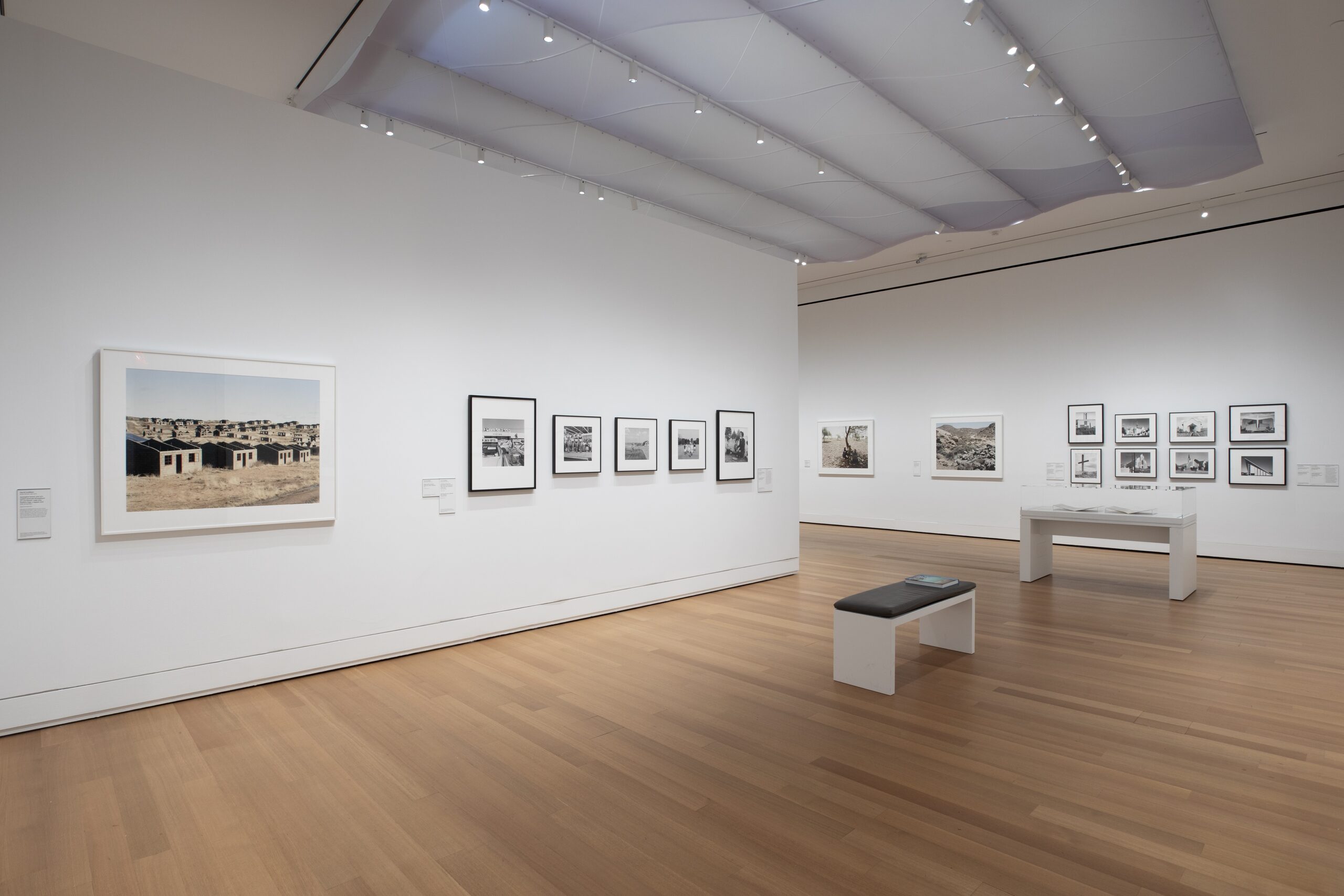The YUAG’s “David Goldblatt: No Ulterior Motive” portrays South African photographer in a “new light”
The photography exhibition explores nuances of life in South Africa during and after Apartheid.

Courtesy of Janet Sullivan
“David Goldblatt: No Ulterior Motive,” a major traveling photography retrospective, is currently on view in the Stephen Susman Galleries on the fourth floor of the Yale University Art Gallery. This exhibition presents seminal images from seven decades of Goldblatt’s career in South Africa during Apartheid and in the years following the collapse of that system.
There are roughly 150 black and white and color prints on display, drawn from the permanent collections of the YUAG and the Art Institute of Chicago. The exhibition was a joint curatorial endeavor between the two institutions in collaboration with Fundación MAPFRE, Madrid.
“The curators were all on the same page that we wanted to show Goldblatt in a new light,” said Judy Ditner, YUAG’s curator of photography. “We came to the images with…fresh eyes, trying to make connections among them, and open a pathway for … new research rather than showing them chronologically as they may have been in the past.”
The exhibition is divided into seven thematic sections of images: “Informality,” “Near/Far,” “Disbelief,” “Working People,” “Extraction,” “Assembly” and “Dialogues.”
Although Goldblatt opposed Apartheid, he was not an activist. His photos reflect his attempts to present a nuanced view of daily life in South Africa.
“His role was to look as dispassionately as possible at what was in front of him, and not just the moments of violence, or protest, or tension but really at all aspects,” said Ditner. “Apartheid permeated every aspect of South African life, and he tried to capture those daily injustices and not the ones that were headline making.”
As Yale history professor Daniel Magaziner notes, the title of the exhibition – “No Ulterior Motive” – references an ad Goldblatt placed in local publications, seeking people willing to become his portrait subjects.
A historian of 20th century South Africa, Magaziner contributed an essay to the exhibition catalogue – “The Empty Space Between Earth and Sky: David Goldblatt’s Dutch Reformed Church Photographs.”
“There was not an ulterior motive other than the image making,” said Magaziner, “which is to say, the observation, the witnessing, which I think comes across very powerfully, and the works are very eloquent in that way.”
Goldblatt, who died in 2018, mentored a generation of aspiring photographers in South Africa — such as Lebohang Kganye and Zanele Muholi. Their works are included in the exhibition in dialogue with his images.
Also included in the exhibition are images by his peers in photography – Ernest Cole, Santu Mofokeng and Jo Ractliffe.
One of Goldblatt’s earliest images in the exhibition is Children on the border between Fietas and Mayfair, Johannesburg, 1949. In this monochrome print, a group of black and white children are prominent in the foreground, as they play exuberantly on the sidewalk and smile toward the camera.
One child – perhaps shy about the photographer’s presence – partly hides his face with a package in a moment of peek-a-boo. In the distance, some of the town of Fietas can be seen as three young Black men walk down the street in the direction of the children.
The photograph attempts to foreshadow how opportunities for interracial play would not last long in Fietas.
The government tried to exert more control over the growing “non-white” population of Fietas (also known as Pageview) and other communities by evicting and relocating them to enforce racial segregation. Passed in 1950, “The Group Areas Act” mandated the segregation of racial groups, including the Muslim and Indian populations, into specific residential and business areas.
Free travel became restricted, something that would come to be accepted as a fact of daily life. Goldblatt vividly documented this reality in “Young men with dompas (an identity document every African had to carry), White City, Jabavu, Soweto, 1972.”
“The Destruction of District Six Under the Group Areas Act, Cape Town, 5 May 1982,” is a landscape image that powerfully conveys the dehumanizing effects of Apartheid after more than three decades, even though no people are seen. This black and white print shows a bulldozed area in the foreground with ruins of homes and businesses – the modern Cape Town skyline and Signal Hill rising behind them.
As Goldblatt’s career progressed, he became more descriptive in his titles, which in turn became much longer. An example of this is his large-scale color photograph, “Highly carcinogenic blue asbestos waste on the Owendale Asbestos Mine tailings dump, near Postmasburg, Northern Cape. The prevailing wind was in the direction of the mine officials’ houses at right, 21 December 2002.”
The asbestos tailings occupy almost the entire frame, slanting from left to right near the top, leaving a narrow strip of land between the tailings and the mine officials’ houses. A ribbon of blue sky occupies the top of the frame.
“He becomes explicit in documenting the slow violence to peoples’ bodies,” said Magaziner. “It’s almost out of necessity because otherwise it’s just an image of rubble.”
Alexis Mburu ’27, a student in Magaziner’s course, “A History of South Africa,” reflected on Goldblatt’s work overall and whether he should have been more politically vocal earlier in his career.
“I think I’m still grappling with that question. It’s obviously very nuanced,” she said. “Whether or not someone should be an activist is a very personal question. I’m more inclined to say, ‘yes, your work should be asking for something.’ But I can [also] respect the fact that one’s work does not have to be deeply intertwined with one’s political beliefs.”
According to Magaziner, “No Ulterior Motive” presents images that only a certain type of photographer in South Africa at that time could have made – a white person of privilege who could move freely throughout the country.
“Wedding photography at the Oppenheimer Memorial, Jabavu, Soweto 1972” was especially moving for Magaziner. In that black and white image, a new bride stands in front of a water feature with, groom, three children and a young woman – all of color.
The bride’s veil billows in the wind, and one of the children and the young woman hold her train. In the distance can be seen a dense subdivision of matchbox houses built by the Apartheid government particularly for removed people.
“Apartheid lasted for thirty-six years. That’s a long time,” said Magaziner. “People lived their lives and found these moments of beauty and serenity within the context of these powerful structures.”
Apartheid ended in the early 1990s through the collective action of the people, combined with international pressure, forcing the government to change its policy.
Goldblatt’s retrospective exhibition reveals the complexity and tensions of daily life under Apartheid as well as the lingering issues of social and economic injustice to be addressed as South Africa entered the post-Apartheid era.
“David Goldblatt: No Ulterior Motive” will be on view at YUAG through June 22, 2025.







